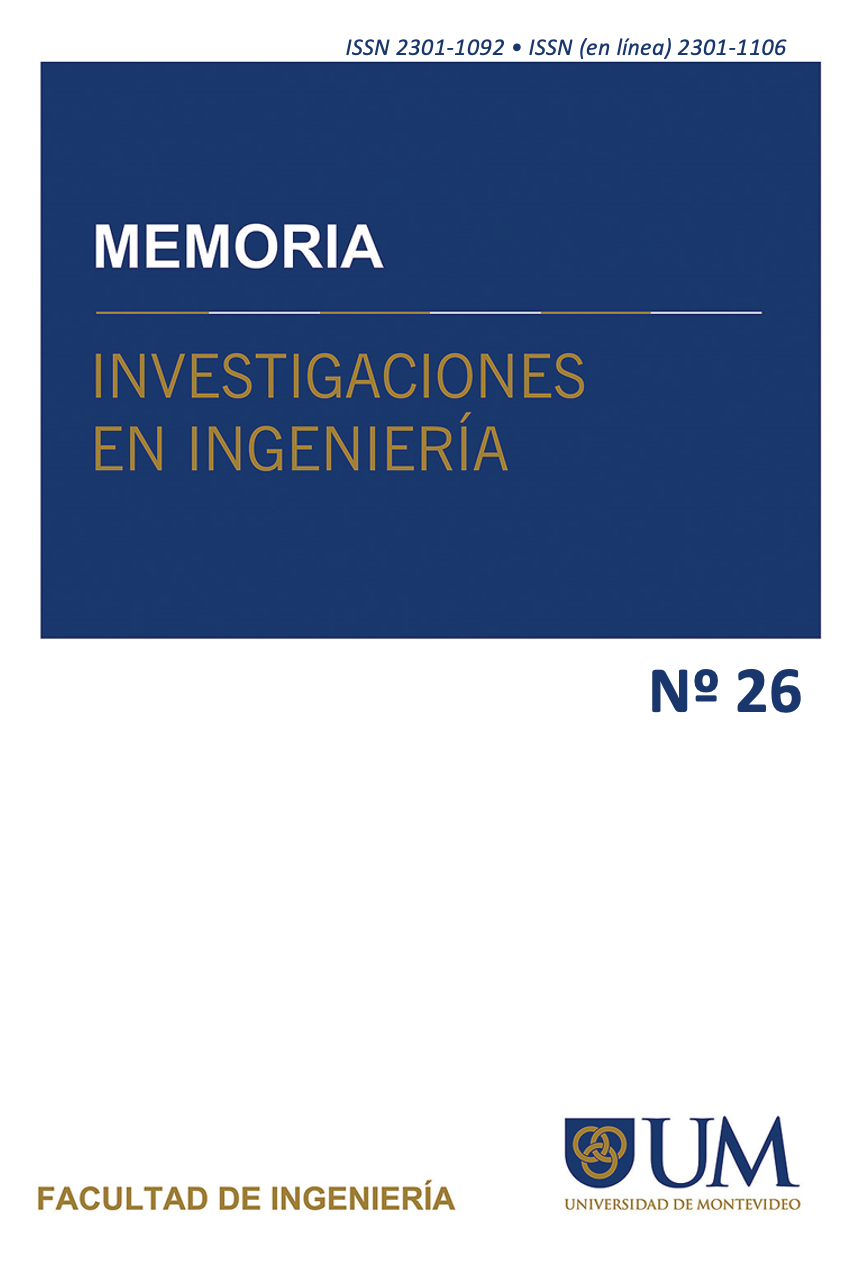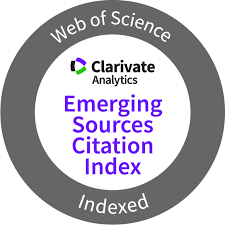Evaluation of preheating impact on weld residual stresses in AH-36 steel using Finite Element Analysis
DOI:
https://doi.org/10.36561/ING.26.14Keywords:
Mitigation, AH-36, Abaqus, Residual stresses, Finite element analysisAbstract
Shipbuilding industry is a valuable and profit earning industry which plays a vital role in country’s economic development. Ships have crucial impact on country’s trade due to necessary support for maritime transportation. Moreover, ships can be utilized for protecting coastal area. Steel chiefly utilized for ships construction due to its good strength and durability. This study emphasizes on residual stress analysis of AH-36 shipbuilding steel. Abaqus software is utilized for finite element analysis to evaluate residual stresses. Mitigation of these residual stresses is very essential; hence preheating technique is discussed in this study. Preheating was conducted at three temperatures i.e., 100ºC,150ºC and 200ºC. Results indicate that Von Mises stresses were decreased effectively due to preheating. 12.6%, 21% and 45.6% reduction were observed at preheating temperatures 100ºC, 150ºC and 200ºC respectively. Further evaluation of stresses revealed that due to preheating of base plate, longitudinal stresses reduced to 21.3%, 44% and 52.4% by increasing preheating temperature from 100ºC,150ºC and 200ºC, respectively. Mitigation of thermal gradient between weld zone and base plate resulted in reduction in overall stresses of base plate.
Downloads
References
Al-Samhan, A., & Darwish, S. M. H. (2003). Finite element modelling of weld-bonded joints. Journal of materials processing technology, 142(3), 587-598. DOI: https://doi.org/10.1016/S0924-0136(02)01015-4
Anca, A., Cardona, A., & Fachinotti, V. (2008). Finite element modeling of welded joints. Mecánica Computacional, (19), 1445-1470.
Colegrove, P., Ikeagu, C., Thistlethwaite, A., Williams, S., Nagy, T., Suder, & Pirling, T. (2009). Welding process impact on residual stress and distortion. Science and technology of welding and joining, 14(8), 717-725. DOI: https://doi.org/10.1179/136217109X406938
Cozzolino, L. D., Coules, H. E., Colegrove, P. A., & Wen, S. (2017). Investigation of post-weld rolling methods to reduce residual stress and distortion. Journal of Materials Processing Technology, 247, 243-256. DOI: https://doi.org/10.1016/j.jmatprotec.2017.04.018
Dragi, S. & V. Ivana (2009). “Finite element analysis of residual stress in butt welding two similar plates.” J. Scientific Technical Review. 1(1), 57–60.
Garipova, N., Batigün, C., & Gür, C. H. (2014). Numerical and Experimental Determination of the Residual Stress State in Multipass Welded API 5L X70 Plates. Materials Testing, 56(10), 831-836. DOI: https://doi.org/10.3139/120.110637
Gannon, L., Liu, Y., Pegg, N., & Smith, M. (2010). Effect of welding sequence on residual stress and distortion in flat-bar stiffened plates. Marine Structures, 23(3), 385-404. DOI: https://doi.org/10.1016/j.marstruc.2010.05.002
Han, S. H., Cui, C., Zheng, Q. S., Zhang, Q. H., & Bu, Y. Z. (2023). Effect of ultrasonic impact treatment on welding residual stress and fatigue resistance of doubly-welded rib-to-deck joints in OSD. Journal of Constructional Steel Research, 211, 108157. DOI: https://doi.org/10.1016/j.jcsr.2023.108157
Jiang, W., & Yahiaoui, K. (2012). Effect of welding sequence on residual stress distribution in a multipass welded piping branch junction. International Journal of Pressure Vessels and Piping, 95, 39-47. DOI: https://doi.org/10.1016/j.ijpvp.2012.05.006
Kollár, D., Völgyi, I., & Joó, A. L. (2023). Assessment of residual stresses in welded T-joints using contour method. Thin-Walled Structures, 190, 110966. DOI: https://doi.org/10.1016/j.tws.2023.110966
Kurtz. G. W. "Finite Element Analysis of Welded Structures," Welding Research Supplement, 1978.
Kassab, R. K., Champliaud, H., Van Lê, N., Lanteigne, J., & Thomas, M. (2012). Experimental and finite element analysis of a T-joint welding. Journal of Mechanics engineering and automation, 2(7), 411-421.
Marin, T., & Nicoletto, G. (2009). Fatigue design of welded joints using the finite element method and the 2007 ASME Div. 2 Master curve. Frattura ed Integrità Strutturale, 3(9), 76-84. DOI: https://doi.org/10.3221/IGF-ESIS.09.08
Malikoutsakis, M., & Savaidis, G. (2009). An approach to the effective notch stress concept to complex geometry welds focusing on the Fe modeling of weld ends. Aristotle University of Thessaloniki, Greece.
Murugan, S., Kumar, P. V., & Raj, B. (1998). Temperature distribution during multipass welding of plates. International journal of pressure vessels and piping, 75(12), 891-905. DOI: https://doi.org/10.1016/S0308-0161(98)00094-5
Perić, M., Garašić, I., Nižetić, S., & Dedić-Jandrek, H. (2018). Numerical analysis of longitudinal residual stresses and deflections in a T-joint welded structure using a local preheating technique. Energies, 11(12), 3487. DOI: https://doi.org/10.3390/en11123487
Raftar, H. R., Ahola, A., Lipiäinen, K., & Björk, T. (2023). Simulation and experiment on residual stress and deflection of cruciform welded joints. Journal of Constructional Steel Research, 208, 108023. DOI: https://doi.org/10.1016/j.jcsr.2023.108023
Reed, R. C., & Bhadeshia, H. K. D. H. (1994). A simple model for multipass steel welds. Acta metallurgica et materialia, 42(11), 3663-3678. DOI: https://doi.org/10.1016/0956-7151(94)90432-4
Ramos, H. M. E., Tavares, S. M. O., & de Castro, P. M. S. T. (2018). Numerical modelling of welded T-joint configurations using SYSWELD. Science and Technology of Materials, 30, 6-15. DOI: https://doi.org/10.1016/j.stmat.2018.08.002
Schenk, T., Richardson, I. M., Kraska, M., & Ohnimus, S. (2009). A study on the influence of clamping on welding distortion. Computational Materials Science, 45(4), 999-1005. DOI: https://doi.org/10.1016/j.commatsci.2009.01.004
Shazad, A., Jadoon, J., Uzair, M., & Muzammil, M. (2023). Material Modelling and Failure Study of Different Fiber Reinforced Composites for Pressure Vessel. Memoria Investigaciones en Ingeniería, (24), 92-104. DOI: https://doi.org/10.36561/ING.24.7
Shazad, A., Jadoon, J., Uzair, M., Akhtar, M., Shakoor, A., Muzamil, M., & Sattar, M. (2022). Effect of composition and microstructure on the rusting of MS rebars and ultimately their impact on mechanical behavior. Transactions of the Canadian Society for Mechanical Engineering, 46(4), 685-696. DOI: https://doi.org/10.1139/tcsme-2021-0207
Stamenković, D., & Vasović, I. (2009). Finite element analysis of residual stress in butt welding two similar plates. Scientific technical review, 59(1), 57-60.
Tabatabaeian, A., Ghasemi, A. R., Shokrieh, M. M., Marzbanrad, B., Baraheni, M., & Fotouhi, M. (2022). Residual stress in engineering materials: a review. Advanced engineering materials, 24(3), 2100786. DOI: https://doi.org/10.1002/adem.202100786
Yang, X., Meng, T., Su, Y., Qi, Z., Wu, D., Vairis, A., & Li, W. (2023). Study on relieving residual stress of friction stir welded joint of 2219 aluminium alloy using cold spraying. Materials Characterization, 206, 113417. DOI: https://doi.org/10.1016/j.matchar.2023.113417
Yan, R., Yu, Z., Wang, S., & Liu, J. (2023). Influence of welding residual stress on bending resistance of hollow spherical joints. Journal of Constructional Steel Research, 208, 108004. DOI: https://doi.org/10.1016/j.jcsr.2023.108004
Published
How to Cite
Issue
Section
License
Copyright (c) 2024 Atif Shazad, Muhammad Astif, Muhammad Uzair, Asad A. Zaidi

This work is licensed under a Creative Commons Attribution 4.0 International License.






















